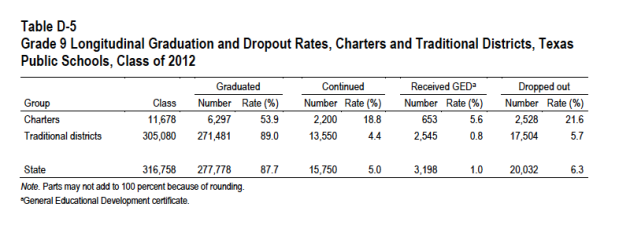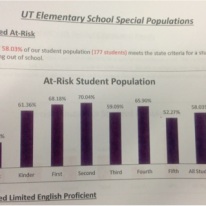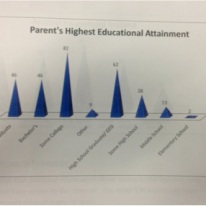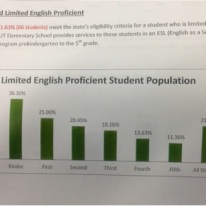Cloaking Inequity: “Diversity is Hard”: Will Charter Schools in Your Locale Choose Equity?

I am not of the ilk that charters are all bad news (See all of Cloaking Inequity’s post on charter schools here). As I have mentioned previously, I am a charter school parent, currently serve on a charter school board, and was an instructor at an Aspire charter school. I realize that I have prominent friends and allies that are 100% anti-charter. I am okay with those feelings because I have serious concerns with equity in the charter movement.
Here in the Lone Star State I am unsure if there is a community more enamored with charters than San Antonio. This love affair has been spurred by millions of dollars in donations by the Brackenridge Foundation and other venture philanthropist involved in “Choose to Succeed.” Previously on Cloaking Inequity I have taken aim at corporate charter chains that are invading San Antonio and other communities because of my concerns with their equity for low-SES students (See Great Hearts, BASIS, and KIPP). In fact, I began Cloaking Inequity so that I could respond to a KIPP press release criticizing our peer-reviewed study about the attrition of African American students from charters in Texas (“Work Hard, Be Nice?”: A Response to KIPP).
What is the state of charter movement? Well, if you look at graduation and dropout numbers in Texas you will probably be shocked. I was. I pulled the following table from the most recent Texas dropout and completion report released by the Texas Education Agency.

Across the entire state, the charter graduation rates is 53.9%. That is a gap of 35.1% compared to traditional districts. Charters pull down the average graduation rate across the state about 2%. The dropout rate for charters in Texas compared to traditional districts is 21.6%— a gap of 15.9%. Charters increase the dropout rate in the state of Texas by .6%. I realize that someone out there is going to say that some charters are dropout recovery schools. That is true, but traditional districts also have dropout recovery schools/programs. Furthermore, we have already demonstrated independently in the aforementioned paper (Is choice a panacea? An analysis of black secondary student attrition from KIPP, other private charters and urban districts) that charters have much higher attrition rates (dropouts and other leavers) across the board.
Clearly, the graduation and dropout rates are bad, bad news for charters. How about diversity and equity?
I recently conducted an interview with a Texas Tribune reporter that was picked up by the New York Times on Friday. In the piece Debating New Charter Schools, Their Policies and Their Effects, Morgan Smith wrote:
Along with Basis, a second Arizona-based school that opened its doors in northwest San Antonio this year, Great Hearts’ presence signifies the emergence of a new kind of charter school in Texas. Often dependent on infusions of private money and parents’ contributions to supplement their programs, these schools go after students seeking intensely focused academics in a collegiate atmosphere and acknowledge that they do not serve every kind of student. But that reliance on additional fees and other policies at the new schools have amplified an already contentious debate over charter schools’ role in the public school system.
“The schools are academically rigorous. Any kid can go, but these schools aren’t going to be for every kid, just as Harvard or Princeton isn’t for every kid,” said Phil Handler, a spokesman for Basis. “If your kid is there, we’ll do everything we can to help them keep up, but for some kids it’s not the kind of education they want.”
Unlike many Texas charters, particularly KIPP and IDEA public schools — which both formed with a mission to reach economically disadvantaged communities — Basis and Great Hearts tend to end up with student bodies that are disproportionately affluent and white.
At the 16 campuses that Great Hearts operates in the Phoenix area (where nearly 60 percent of public school students are Hispanic or black), 69 percent of the nearly 7,000 students are white. Only two of Great Hearts’ Arizona campuses participate in a federal program that offers free and reduced-price meals for low-income students. Of the almost 5,000 Basis students in Phoenix, Tucson and Scottsdale, roughly 12 percent are Hispanic and 2 percent are black. None of the eight campuses offer free and reduced-price meals, which is also the case at the San Antonio school.
The article continues,
But some policies at Great Hearts and Basis have raised doubts about their commitment to economically disadvantaged or otherwise academically challenging children…
Both Great Hearts and Basis are what Julian Vasquez Heilig, a professor at the University of Texas at Austin’s College of Education, refers to as “à la carte schools,” because while they are tuition-free, they charge fees for uniforms, field trips, extracurricular activities and athletics. In some instances, that can amount to more than $1,000 per student annually. On top of those fees, parents are also encouraged to assist the schools financially through personal donations. With neither school providing transportation to their campuses, parents with limited financial means could face an additional obstacle.
In Texas, charter operators may exclude students only based on their disciplinary history. They cannot consider factors like socioeconomic background, race or past academic performance in the application process. But those prohibitions can be insufficient to prevent a practice some education policy experts call “creaming,” in which charter schools pull in only the highest-achieving or most dedicated students from traditional public schools. That can also happen after students enroll in charters, where a lack of remedial support and rigorous curriculum can lead weaker students not to return.
“Some charters have perfected the art of creating barriers to low-income kids,” Mr. Heilig said. “If you have to run a steeplechase to get into a school, most low-income parents aren’t able to do that, especially when they are working two or three jobs.” (The University of Texas at Austin is a corporate sponsor of The Texas Tribune.)
Peter Bezanson, Great Hearts’ chief academic officer, said that in Nashville, the school board had manufactured complaints about the school because it did not want the competition. He said the school’s financial inability to provide transportation created a challenge, but that parents organized car pools and distributed bus-route information and that the school never allowed financial need to keep a student from participating in a trip or extracurricular activity.
“For us, diversity is really hard,” Mr. Bezanson said. “It’s been something that is really important to us, and we’ve worked really hard to increase our access to diverse student populations and markets.”
Diversity is hard eh? More bad news for charters.
Do all charters perform poorly on academic measures?I am not 100% opposed to charters because there are islands of excellence in the charter movement. The problem is that they are the outliers, not the rule. Typically, on issues of diversity and academic achievement, traditional schools outperform charters. Here are a few examples from previous posts on Cloaking Inequity:
- Mercy! A Skunk!?: Traditional Schools versus Charter School Achievement
- Exiting: A sample of charter chains vs public district’s student attrition
- Are charters better on “college readiness” for Latina/os?
- “Don’t Believe the Hype” Pt. II: Charter Schools and College Readiness for Blacks
- JVH@TX Senate Ed Committee: Invited Testimony on Charters
Do all charters approach low-SES students and diversity with disdain? I previously discussed Kevin Welner’s Dirty Dozen. He details how the research literature has documented that BASIS and Great Hearts are not just bad apples, they are part of a broader problem that charters have with diversity and equity. See Breaking News: Kevin Welner’s Charter School Dirty Dozen.
The situation at the University of Texas Charter School where my daughter attends and I am a board member is the anti-thesis of BASIS and Great Hearts. The school has a racially and economically diverse student body. The school also prioritizes serving special populations Gifted and Talented, ELL, and Special Education students. Don’t believe me? Here is internal data from UT-Austin charter school that has not previously been available to the public (I took these photos from an internal report with my IPhone, I apologize for the quality).
Charters have a choice whether they want to be racially and economically diverse schools that serve ELL, Special Education and low-SES kids. Based on the various admissions and management policies documented in the Dirty Dozen, charters choose their students, rather than families choosing their schools— in essence, school choice is charter schools choose. What will the charter schools in your locale choose? Will you hold them accountable for being diverse schools even though “diversity is hard”?
This blog post has been shared by permission from the author.
Readers wishing to comment on the content are encouraged to do so via the link to the original post.
Find the original post here:
The views expressed by the blogger are not necessarily those of NEPC.






